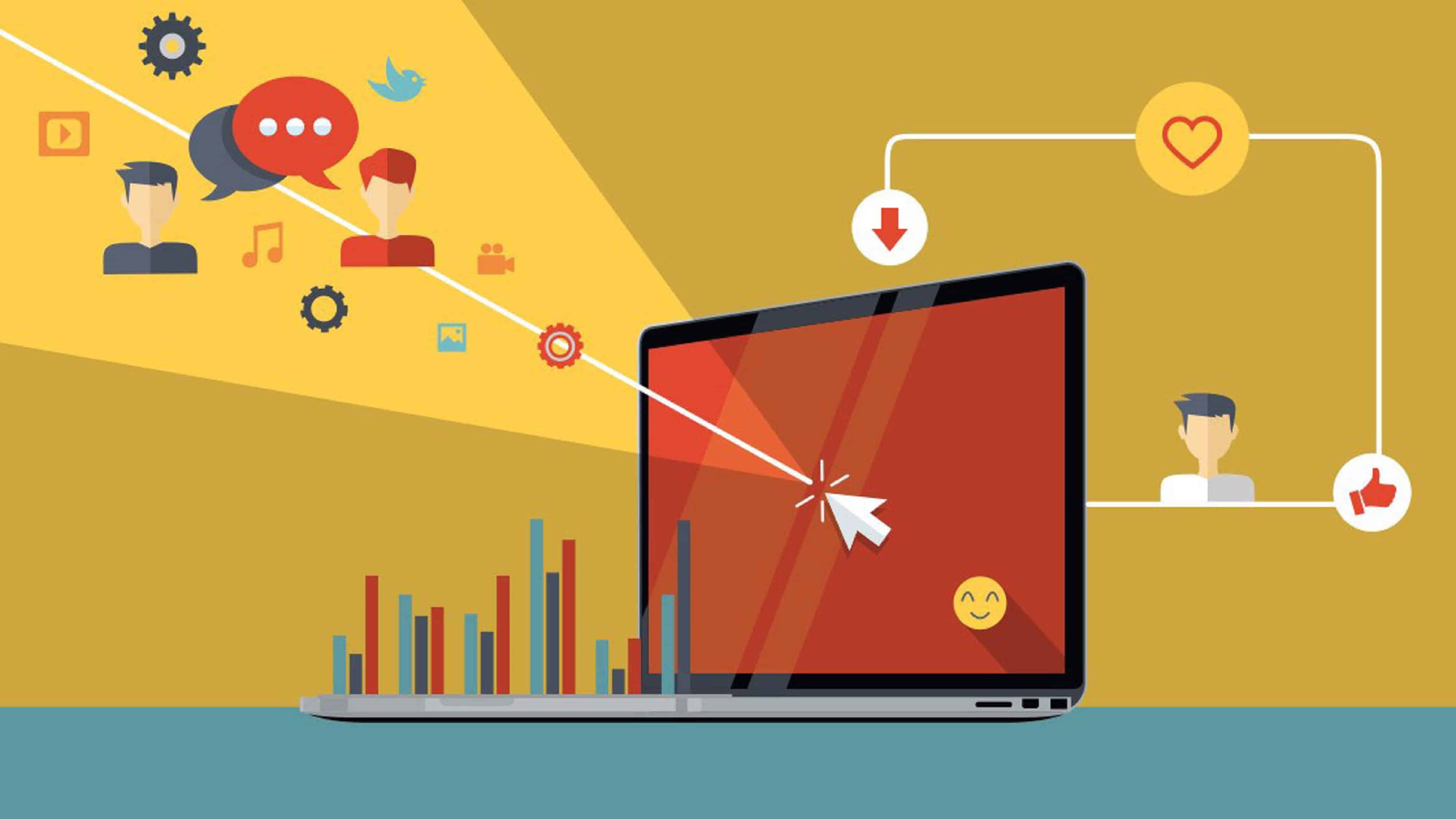
How Big Business Uses Marketing Automation Pricing To Drive Profits 🖥️
How does marketing automation pricing help pricing teams make better and more profitable pricing decisions?
What’s the role of the pricing team now that marketing automation pricing has entered the modern pricing department?
>Download Now: Free PDF Pricing Recruitment
In the early days of automation, the goal was first and foremost scalability and efficiency. Job tasks were well-defined with clear inputs and outputs. More recently, however, automation has tapped into occupations that require judgement, decision making and sense-checking. Occupations such as law, accountancy, medicine, architecture, pricing and revenue flow task management pricing are all under the AI automation spotlight.
Why are big businesses and AI now focusing on automating pricing duties and pricing task force tips prices? In short, many pricing operations even today are too slow, inefficient and ineffective. They are just not delivering results and freeing up the teams’ capacity. Quite the reverse, they are eating up time, patience and resources. Costing business millions of dollars a year in profits.
In this article, we’ll discuss the integration of automated pricing processes to both simple and complex pricing decisions. We will also evaluate how effective the process of marketing automation software pricing has been for pricing departments.
We argue that the future of pricing work will largely be based on hybrid intelligence; i.e., a supportive mix of artificial intelligence and human intelligence derived from a pricing team.
We believe that AI pricing programs can help augment the pricing team. We see the automation of mundane tasks and repetitive computing and analysis as essential to free up capacity.
By the end of this article, you will learn how best to integrate AI within your marketing automation pricing.

Deconstructing pricing roles for marketing automation pricing
A fundamental aspect of marketing automation pricing is understanding the nature of pricing work. Pricing work consists of both simple and complex work: On the one hand, many everyday pricing tasks are administrative, manual, slow and in many ways repetitive and mundane. Manually entering prices in the system, for instance, or matching product categories and descriptions to price codes. On the other hand, pricing teams undertake a large proportion of complex price operations and tasks to get the job done.
Things like developing price and revenue models, discount structures, customer rebate mechanisms; setting new price floors and ceilings; and designing price algorithms to optimise prices across a large product portfolio. Tasks highly specialised and required a greater depth of knowledge. What’s more, not many people know how to do these niche pricing tasks. So businesses and vendors are very keen to find people with these skills and capture their knowledge in their marketing automation pricing systems.
To understand how to analyse differing pricing tasks for marketing automation pricing, experts deconstruct component work activities specific to pricing and revenue management using the following approaches:
Routine vs. Variable Work
Organisational design and pricing experts distinguish what aspects of pricing work is repetitive or variable. But as a rule of thumb: Routine pricing work is oftentimes predictable, mundane, routine and set by parameters. While, variable pricing work, on the other hand, changes and is either unpredictable, and/or requires abstract thinking and decision rules.
A large proportion of analyst work can be described as repetitive but not necessarily simple. For example, pricing analysts spend a lot of their time gathering and synthesising similar data sets from systems to work out price volume patterns. They also look for cost, mix, volume price trends at the transaction level – i.e., weekly monthly sales, deal data, rebates, price volume elasticities. All these tasks are fairly repetitive, routine and linear.
Dependent vs. Independent Work
The next phase of marketing automation pricing is to separate dependent work from independent work. Independent pricing work generally requires little communication with others. While interactive or dependent pricing work commonly includes stakeholder engagement and collaboration, meetings, forums, discussions, etc. Also, it typically relies on communication skills and empathy.
When a pricing team is developing price structures, for example, they are primarily doing what is classified as ‘independent work’. They gather data from various systems and data/information sources to make decisions and draw conclusions. They’ll normally comb through lots of datasets to find and evaluate customer buying behaviours and trends. They’ll also develop reports and ad hoc, models. These tasks require limited to no engagement with another person.
A good portion of this type of pricing work is automation-compatible. RPA can do the information gathering and synthesis while artificial intelligence could do much of the analysis and produce certain basic reports.
Cognitive vs. Physical Work
The next step in marketing automation pricing is to separate cognitive work from physical work. Physical work is essentially manual in nature, needing manual dexterity and strength. In contrast, cognitive work requires pricing team member’s mental abilities.
A lot of ‘mental work’ in pricing, as we have described in the section above, can often be augmented by cognitive automation, but not replicated entirely. This is because complex pricing tasks rely on a mix of convergent and divergent thinking. Problem-solving is not a linear, binary process making it difficult to copy.
Having the three classifications (as discussed above) in mind, businesses can now understand better the work that they’re planning on automating and how particular pricing tasks break up into individual jobs.
How to automate pricing knowledge using hybrids in marketing automation pricing
The future of pricing work is evolving quickly to digital and both software and hardware is rapidly improving in performance. In consequence, we believe that much of the work from pricing teams will derive from hybrid intelligence. Hybrid intelligence uses both artificial intelligence and human intelligence to achieve more complex business outcomes.
The relationship between AI and a pricing team is often a supportive one – rather than an either-or approach. Currently, most pricing teams rely on their human intelligence to make decisions with support from tools like Excel. In the future, though hybrid Intelligence will be the new norm – supporting the pricing team and Artificial Intelligence to collectively achieve superior results and learn from each other. In many ways, hybrid intelligence will be the next dominant pricing team model in the digital age.
This is what each pricing hybrid does in marketing automation pricing:
There are two types of hybrid intelligence that drive marketing automation pricing. The first hybrid is more basic. Fundamentally it stores pricing knowledge and applies it to do simple and routine tasks like price changes. The second hybrid is more sophisticated. It does what the first hybrid does but also continues to learn from the pricing team in real-time (mistakes and successes) to solve more complex pricing problems.
Pricing hybrid 1:
- A pricing hybrid is a set of tasks that have been pre-programmed into AI using scripts and coding. The pricing team uses AI hybrids to automate simple pricing tasks so they can do other work.
- To create a hybrid, programmers develop a template for each pricing member. Their job is broken down into discrete tasks (using the job analysis process described above). This template is then translated into code scripts.
- From here the hybrid can store the team member’s pricing knowledge for a particular topic – say price-setting process – based on a template on their price-setting history.
- AI then applies the price-setting template to all new customer accounts or quotes.
- This process of extracting and storing knowledge is then replicated for every member of the pricing team.
- A whole body of pricing knowledge (procedural and declarative) is then stored and executed by AI over time.
- A model of past pricing decisions (with predefined variables) is then used by the pricing team to make decisions in real-time.
- This hybrid pricing scheme is estimated to lead to an additional increase in profits. Overall, vendors of AI software estimate it generates expected profits 6.8% higher than those of the salespeople, and significantly higher than those of pure automation as well (1.5% higher than the model’s profits).
Pricing hybrid 2:
- The second type of pricing hybrid is based on a machine learning model.
- A machine learning model predicts the difference in the expected profitability for a pricing strategy a pricing team produces based on predefined conditions, rules and variables.
- For example, it may decide to evaluate a pricing strategy based on sales and pricing staff performance variables and customer account and deal characteristics (e.g., the weight of the order or frequency of purchases by the customer, for example). This calculation is based on an algorithm that has been designed by the vendor.
- By using the Random Forest (RF) algorithm, the model then predicts the difference in expected profits between the salesperson or pricing team member and the model.
- It then allocates each quote to either human or automatic pricing.
- According to vendor research, machine learning RF hybrid generates expected profits of 7.4% higher than those of sales teams. However, research to date is based on very small sample size and set of conditions.
Discussion: Next-generation pricing combines automation and human decision making to increase profitability
As you can see from the hybrids above, the aim of automation is to create an artificial intelligence version of B2B and B2C pricing decisions that copy past pricing behaviour and apply it systematically to new pricing decisions.
In essence, automation is trying to create a linear representation of each pricing team member’s daily activities (as well as alternative machine learning representations) by regressing their past pricing decisions using different variables (e.g., cost of the material, order size or the identity of the client).
This approach uses a decision variable (price margin) rather than the outcome (whether the client accepts the price or rejects the proposal based on price or another reason). This is called ‘judgemental bootstrapping’ – and a dominant method of categorising and automating pricing tasks in the behavioural judgement literature.
The benefit of bootstrapping simple pricing tasks like price reviews or manual data entry or coding work is that it frees up the team’s capacity – they get to do important ‘thinking’ work while AI continues to automate tasks based on the knowledge the team has plugged into the system. As the machine learns, it is able to make more price recommendations and automate more complex pricing tasks.
Although pure automation performs better than most sales teams in terms of accuracy on simple tasks. Prior research on B2B pricing decisions indicates that valuable information can often be held in the mind of the sales rep or pricing team member when they make pricing decisions. People do not give accurate accounts of how they think. They often don’t know how they think through problems. Problem-solving is a latent and lateral cognitive system. It is very difficult to explain levels of thinking in terms of a linear process.
Advantages of Marketing Automation Pricing
The advantage of automation – especially with the combination of RPA and AI applications – is its ability to collect and process data and analysis. Basically, for some pricing decisions, machine learning is more reliable and quicker than a human. It has also got to a stage where it can automate some aspects of the job that involve data analysis, manipulation, creative intelligence and pricing decisions. However, it is ineffective at understanding or quantifying abstract pricing concepts and thinking with great accuracy.
Disadvantages of Marketing Automation Pricing
The leading hypothesis for automation is that it makes decisions that are more accurate than humans; therefore statistically more likely to yield higher profits than not providing an automated recommendation. However, research on AI is in its infancy. Sample sizes are small and hardly random. What’s more, there’s still a lot of advertising hype masking the facts of its true capability.
For example, it takes a very long time for AI to learn even basic pricing decisions that people make in seconds. This is because AI does not learn at the same rate or way as humans. AI rote learns and copies and stores what it needs to do a task. It then translates this learning into line upon line of code. A simple task, for instance, can take up vast amounts of coding, storage and energy.
Implications
There’s a widespread perception that automation may eliminate jobs. The majority of tasks, however, cannot be automated with the accuracy of simple tasks. This is because solving complex pricing problems requires a mix of abstract, logical and lateral thinking that is difficult to translate into linear binary coding, scripts or processes.
Producing a pricing hybrid for all tasks would be prone to error and less reliable than a human pricing team.
The perceived level of stakeholder support tends to grow significantly as organisations move further along their automation journey. AI actually gets more expensive, not cheaper, as the rate of learning slows down and more people get involved to manage it.
Automation has tapped into occupations that require higher-order knowledge and judgements, not just low-level tasks.
Automation is not error-free – there have been many Amazon examples of AI pricing calculating ridiculous prices because it misread the market. Mistakes humans would have quickly picked up on.
Marketing automation pricing requires real human thinking and AI intelligence. AI cannot replace a pricing team yet. AI has not been able to replicate the majority of complex thinking tasks required for pricing because the cognitive complexity involved in thinking is largely unknown.
〉〉〉 Get Your FREE Pricing Audit 〉〉〉
Conclusion
In this article, we have discussed a hybrid approach to pricing team decision making. We found that AI automates pricing tasks by preserving individual and organisation pricing knowledge through learning, storing and testing the pricing teams’ decision-making behaviour.
While early estimations forecast that AI and automation would replace most people in their jobs, it appears that some knowledge jobs are too difficult to replicate – in particular jobs that require higher-order thinking and non-routine tasks.
Many aspects of pricing work are still too difficult to fully automate because they rely on higher-order thinking and concepts. Pricing jobs are less routine than most finance roles. And impacted less by automation than standard accountancy and finance jobs.
The combination of human and machine collaboration will mark next-generation pricing and revenue management. It is not an ‘either’ ‘or’ situation when it comes to strategic pricing and revenue management.
Click To Download Your Free Executive Guide To Best-In-Class Pricing Strategy Now.
For a comprehensive view on integrating a high-performing pricing team in your company,
Download a complimentary whitepaper on How To Improve Your Pricing Team’s Capability.
Are you a business in need of help to align your pricing strategy, people and operations to deliver an immediate impact on profit?
If so, please call (+61) 2 9000 1115.
You can also email us at team@taylorwells.com.au if you have any further questions.
Make your pricing world-class!
Related Posts
Leave a Reply Cancel reply
Categories
- marketing strategy (26)
- Organisational Design (14)
- Podcast (114)
- Pricing Capability (87)
- Pricing Career Advice (10)
- Pricing Recruitment (19)
- Pricing Strategy (292)
- Pricing Team Skills (13)
- Pricing Teams & Culture (25)
- Pricing Transformation (48)
- Revenue Model (25)
- Sales Effectiveness (27)
- Talent Management (7)
- Technical Pricing Skills (35)






